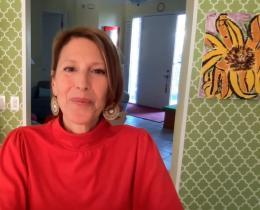Birds of every stripe, ordinary and regal—robins, crows, hawks, and eagles—all bustle about readying their nests. Blanketed in springtime buds, the mountains appear to be clothed in mauve velvet against the sapphire sky. The valley’s rosy haze is reflected in the reservoir as a rich watermelon hue. Meanwhile, multitudes of tiny blossoms burst like emerald fireworks, rendering these hardwood forests softer. It’s as if the landscape is a book written in blushing pinks and chartreuse greens. Indeed, both books and the land are on my mind.
For the past three days, I have been immersed in my hometown’s Woodstock Writer’s Festival. This valley that is a sanctuary to countless painters and musicians, is also home to a vibrant community of writers, including the likes of Gail Godwin, Abigail Thomas, and Ed Sanders. The Writer’s Festival has become an annual highlight for me, and this year the event has me thinking about writing as a way of knowing place. It has also helped me understand the striking parallels between the capacities developed by writing and those developed by time spent with the landscape. How had I failed to notice that two of my greatest loves are remarkably similar spiritual practices?
At the festival, I heard André Dubus III describe how characters in his novels are sometimes more real to him than the actual people in his life. The craft of writing is a penetrating vehicle for knowing and understanding, Dubus told those of us present. When I heard that, a coup de foudre struck me as I grasped how intimate I was becoming with my landscape by writing about it. The mountains, sky, water, forests, and creatures have become, for me, like the characters in André Dubus’s books become for him. The more time I spend writing about these elements, the richer and more unexpected their identities are.
I also came to see that the steadiness of the attention required in writing is similar to the steady presence of the mountains, water, or creatures. The capacity to exist in the now, which I am observing as more and more intrinsic to the land, is also a requirement of writing well. When an aspect of the natural world helps me focus and clear my mind, it’s good practice for writing. In these ways, the landscape both models presence and strengthens my capacity for mindfulness as a writer.
When I sit down to write I am often tense, distracted by the myriad details and stresses of my life. But the more hours I spend focusing on the words in front of me, the more everything else falls away, and I find myself entering a realm beyond the daily demands of life. The cycle of exiled self, return to consciousness, and belonging has resurfaced in another form.
There’s another striking parallel between these two essential practices of mine. The land reveals, as writing so clearly does, that truth is purely a matter of perception. This valley can simultaneously uncover the deepest sadness for one person while giving rise to unfettered joy for another. While the presence of these mountains may put one individual in touch with their feelings of deeply buried grief, for instance, his or her companion might be feeling a sense of rebirth.
I experienced this mutability of truth while writing Returning to My Mother’s House, a memoir about my mother’s early death and my long-denied grief. When I sent the almost-finished manuscript to my brother and sister, their responses astonished me. My book described the sadness and loss of self I perceived in my mother’s life, and my experience of her unfulfilled dreams. But my sister mostly recalled the underlying current of mom’s seething anger, while my brother remembered our mother as the happiest person he had ever known. You could not have uncovered three more radically opposing views of the same mother. And all of our perspectives were true. Isabel Allende has famously said, “All of my writing is based on the premise of the mutability of fact, the mutability of memory. That it is difficult to separate fact and imagination—the lines are very blurry.”
Allende could easily have been speaking about the land. How often as I walk the Ashokan Way have fact and imagination become impossibly intertwined—the way a snow squall sends me into a sandstorm in the Sahara, for instance, or the mountains, ice, water, and rocks become a majestic archetypal woman, or the mist, the wind, and the light became landscape illusionists performing sleight of hand with the visible and invisible. Both writing and the natural world encourage, perhaps even demand, that I develop fluency in moving between the material and the mystical. Time and space are mutable when I write, and they seem to be mutable for this valley that holds the past, present, and future as interchangeable parts, as well.
This cultivation of the imagination is at the very heart of what both the land and writing teach me: Go through the veil of your surface awareness. Beyond that veil, there is more to discover than you could have ever hoped. My late colleague, the poet and mystic John O’Donohue, called God the Divine Imagination. Writing and landscape are my gateways into the Divine Imagination.
Said another way, these two spiritual practices inform, challenge, and change me like nothing else. I have no idea why it wasn’t until now that I saw all the obvious connections between these two great loves of my life. But standing here in my landscape suffused by springtime’s rosy glow, knowing that I will soon be writing about this, I experience what the Chinese call a blessing of double happiness.



